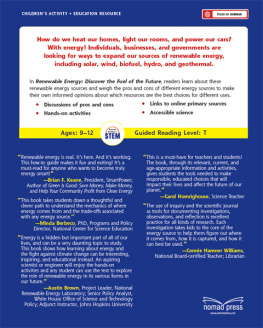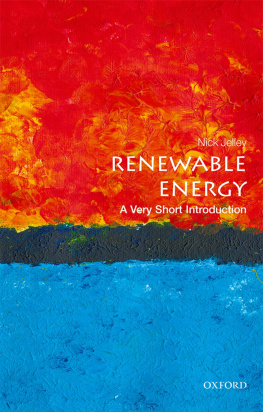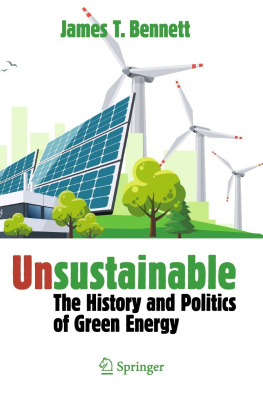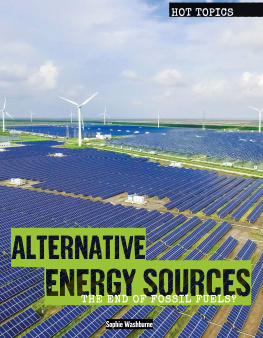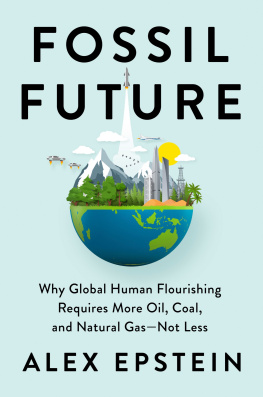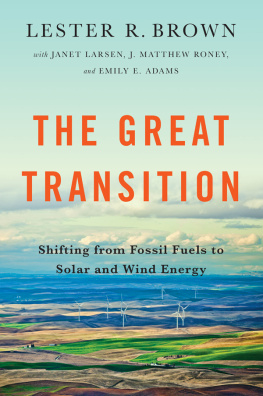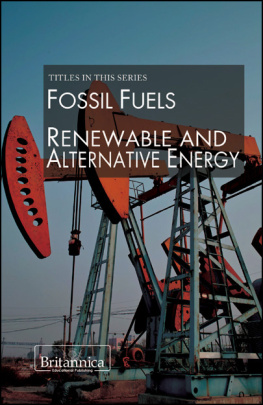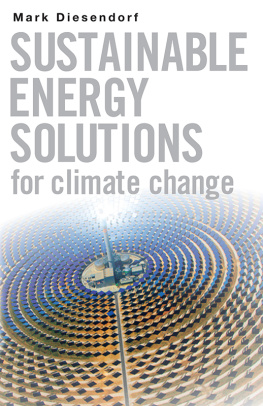First published 2016
by Routledge
2 Park Square, Milton Park, Abingdon, Oxon OX14 4RN
and by Routledge
711 Third Avenue, New York, NY 10017
Routledge is an imprint of the Taylor & Francis Group, an informa business
2016 Roy L. Nersesian
The right of Roy L. Nersesian to be identified as author of this work has been asserted in accordance with the Copyright, Designs and Patents Act 1988.
All rights reserved. No part of this book may be reprinted or reproduced or utilised in any form or by any electronic, mechanical, or other means, now known or hereafter invented, including photocopying and recording, or in any information storage or retrieval system, without permission in writing from the publishers.
Trademark notice: Product or corporate names may be trademarks or registered trademarks, and are used only for identification and explanation without intent to infringe.
British Library Cataloguing in Publication Data
A catalogue record for this book is available from the British Library
Library of Congress Cataloging in Publication Data
Catalog record for this book has been requested
ISBN: 978-1-138-85837-4 (hbk)
ISBN: 978-1-315-71806-4 (ebk)
Typeset in Bembo
by Book Now Ltd, London

Please visit the Companion Website at www.routledge.com/cw/nersesian for the following additional sections.
Chapter 2
Early History of Electricity
Generating Electricity Commercially
When Demand Exceeds Supply
Real Lesson of California
Chapter 3
The Role of Charcoal and Wood Pellets
Biomass in Home Heating
Two Processes for Making Ethanol
Proposed Solutions
Traditional Means of Making Cellulosic Ethanol
Chapter 4
First Energy Crisis
Origin and History of Coal
Coal and the Industrial Revolution
Rise and Fall of King Coal
Chapter 5
History of Lighting
History of Oil
Enter John D. Rockefeller
Enter Marcus Samuel
Enter British Petroleum
Emergence of Oil as a Strategically Vital Commodity
Opening Up the Middle East
Chapter 6
Earth as an Oil Manufacturer
Formation of Oil
Biotic Theory of Origin
Abiotic Theory of Origin
Oil Exploration and Production
Drilling Rights
Drilling Operations
Offshore Exploration Rigs
Offshore Production Rigs
Decision to Drill a Production Well
Getting Oil to a Refinery
Refining
Chapter 7
History of Coal Gas
History of Natural Gas
Battle over Lighting
Long Distance Transmission
Federal Regulation
War Years
Last Stop before Total Regulation
Chapter 8
Nuclear Incidents and Accidents
Three Mile Island Incident
Chernobyl Nuclear Accident
Fukushima Daiichi Accident
Disposal of Spent Fuel
Birth of the Environmental Movement
Saga of the Hoover and Glen Canyon Dams
Saga of Aswan High Dam
Chapter 9
Solar Power
Historical Development of Thermal Solar Power
Thermal Solar Energy for Heating Water
Thermal Solar Energy for Generating Electricity
Wind Power
Historical Development
Government Involvement in Developing Wind Turbines
Chapter 10
Hydrogen Economy
Historical Background
Hydrogen Today
Ocean Power
Tidal Power
Wave Power
Chapter 11
Environment
US Clean Air Acts
Cross-State Air Pollution Rule
Climate Change Conferences
Sulfur in Diesel Fuel
Efficiency and Conservation
Energy Star Program
Light Emitting Diodes and Compact Fluorescent Light Bulbs
US Green Building Council/LEED
Sustainable Energy
Energy Returned on Energy Invested (EROEI)
Online Figures
Figure CW7.1 US Residential Consumers, Cost of Natural Gas
Figure CW7.2 Consumption versus Waste of Natural Gas
Figure CW9.1 Solar Thermal Capacity
Figure CW9.2 Historical Development Solar Thermal Electricity Capacity
Figure CW11.1 EROEI Values for Various Types of Energy
Figure CW11.2 Rise of Energy Input to Sustain Growing Energy Output
Online Tables
Table CW6.1 Historical Development of Refining Processes
Table CW8.1 Examples of Radioactivity in Bq
Table CW8.2 Likely Effects of Whole-body Radiation Doses
Contents
Compressed natural gas (2,0004,000 psi) can be transported in specially built tanks. The problem is the cost of building large-capacity cargo tanks that can withstand this magnitude of pressure with a cargo still four times greater in volume than in a liquefied state. However, there are special circumstances where compressed natural gas carriers are feasible such as small natural gas fields in remote areas of the Amazon River where reserves are not sufficient to justify building a long-distance pipeline or a liquefaction plant. Compressed natural gas carriers are useful for natural gas delivery to lightly populated Caribbean or Southeast Asian islands whose consumption is far too small to sustain an LNG import terminal, but where less costly natural gas can be substituted for diesel fuel for electricity generation. Compressed natural gas is not conducive to high volume, long-distance transport of natural gas.
With the exception of Russia and the US, much of the worlds natural gas reserves would be stranded if pipelines were the only means of transmission. The construction of long-distance undersea pipelines to connect remote fields in Iran, Qatar, Nigeria, Venezuela, Indonesia, and Malaysia with industrially developed nations thousands of miles away in waters that may be 23 miles deep with undersea mountains replete with deep chasms would be either impossible to construct or prohibitively expensive. The natural gas reserves for these nations remained stranded with no commercial value until a new means of transmission was devised. Just as liquefied gas liquids (propane and butane) are refrigerated for transport as a liquid at ambient pressure, so too can natural gas. As a liquid, natural gas takes up 610 times less volume than at ambient conditions with a specific gravity a little less than LPG. The problem is that natural gas is a liquid at atmospheric pressure at a much colder temperature of 161C (258F), which imposes severe constraints on tank design and insulation to prevent LNG from coming in contact with the hull. Conventional steel in ship hulls, if exposed to the cold temperature of LNG, is subject to instantaneous cracking, known as brittle fracture. A few mass-produced Liberty freighters during the Second World War sunk after their hulls split open from brittle fracture when the vessels sailed into cold north Atlantic waters. A steel belt welded around the hull of Liberty vessels resulted in no further losses from this cause. Better quality steel prevents brittle fracture at freezing ocean temperatures, but not from the cold of liquefied natural gas.
A much greater technological challenge in tank design and insulation than LPG carriers had to be faced before natural gas could be transported as a liquid. The success of independent research efforts in the 1950s led to the first LNG delivery in 1964 from a liquefaction plant in Algeria to a regasification terminal on an island in the Thames River. From this time forward, Algeria would remain a major force in the LNG business, expanding its export capacity in 1973, 1978, 1980, and 1981. Small-scale LNG plants were built to export LNG from Alaska (Cook Inlet) to Japan in 1969 and from Libya to Europe in 1970. Brunei was the first large-scale LNG export project to serve Japan, starting operations in 1972 and relying on 75,000 cubic meter LNG vessels. This project was followed by other large-scale LNG export projects in Indonesia and Abu Dhabi in 1977, Malaysia in 1983 (a second in 1994), Australia in 1989, Qatar in 1997 (a second in 1999), Trinidad and Nigeria in 1999, Oman in 2000, and Egypt in 2005, employing 125,000 cubic meter LNG carriers. Many of these nations have subsequently expanded their LNG production capacity.


